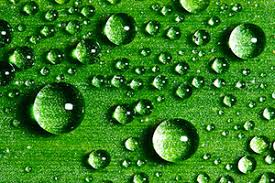Is Parylene Hydrophobic?
Posted by Sean Horn
Friday, August 10, 2018 7:30
@ 7:30 AM
Hydrophobic Basics and Hydrophilicity
In the science of surfaces and thin film protection, the term hydrophobicity is used to designate the capacity of both a substrate surface and its protective coating to repel water. In contrast, their hydrophilicity represents their affinity for water absorption.
One of the primary purposes of conformal coatings is safeguarding electronics from the impact of water/moisture incursion, which can negatively impact their operation. The hydrophilicity of items such as printed circuit boards (PCBs) and medical implants relies on conformal coating hydrophobicity to ensure water does not violate the interior of electrical components, disrupting their intended performance. Assured surface hydrophobicity is also essential to improved energy applications for automotive, military and tribological applications, environmental protection and solar energy harvesting.
With respect to conformal films, coated surfaces are considered
- hydrophobic when their static water contact angle θ is >90°, and
- hydrophilic when angle θ = <90°.
Although some question remains why a differentiation of a slight 2° — from 89° to 91° — is sufficient to render transition from a hydrophobic surface to one hydrophilic, this definition maintains until one more accurate is supported by technical data.
Hydrophobic Properties of Parylene and Liquid Coatings

The wetting behavior of conformal coating materials is very relevant to their use. Parylene (XY) offers generally superior hydrophobicity in comparison to liquid coatings acrylic, epoxy, silicone, and urethane. Liquid coatings are pre-synthesized and applied to substrates by:
- brushing the wet coating onto the designated surface,
- immersing the component in a bath of liquid material (dipping), and
- spraying the coating substance through either manual or automated methods.
Of wet coatings, acrylic, silicone and urethane offer reliable water-based moisture protection under limited conditions.
In contrast, parylene uses a specialized chemical vapor deposition (CVD) application methodology, which synthesizes in-process. Solid, powdered parylene dimer is converted to a gas, depositing on targeted surfaces on a molecule-by-molecule basis. Permeating substrate surfaces, CVD generates uniform conformal film application to virtually any surface topography and material, penetrating even the smallest surface crevices. The process effectively generates an internal, as well as external protective layer, maximizing XY’s barrier protection.
XY typically provides effective barrier protection at film thicknesses ranging from 0.013 – 0.051 mm. (0.0005 to 0.002 in.), controllable to less than a single micron (1 μm/1,000 nms). The exceptional uniformity of pinhole-free XY prevents leakage; vaporous coatings seep deep into substrate surfaces during application, providing additional moisture protection. XY water barrier properties also restrict water vapor transmission rate (WVTR), the passage of water vapor through barrier film, measured in terms of area and time. Resultant ultra-thin films demonstrate exceptional hydrophobicity and are recommended for MEMS/nano-tech uses.
Parylene’s distinctive properties — biocompatibility, dielectric/insulative advantages, truly conformal pinhole free film deposition and protection – combine with low water absorption (swelling) to enhance their applicability to a wide range of purposes. Biomedically, applications include cardiac pacemakers, high-fidelity molecular micropatterning, intra-oral biomolecule magnets, neural electrodes and stents, These specialized biomedical applications have been developed in addition to parylene’s extensive use for PCB protection and use for aeronautic/defense, automotive, communication, consumer and industrial products. Enhanced hydrophobicity also extends XY’s use for product ruggedization.
Table I provides a rendering of parylene’s hydrophobic capacities.
Table I: Hydrophobic Properties of Selected Parylenes
Parylene-N Parylene-C Parylene-D
Water absorption (% in 24h) <0.1 <0.1 <0.1
Water vapor transmission rate
(g.mm)/(m2.day) 0.59 0.08 0.09
Water contact angle 79° 87° 91°
Permeation barriers for electronic devices are essential to assure their ongoing performance through a wide range of operational environments. For this purpose, parylene’s versatility is largely based on its hydrophobicity – repelling water and moisture at the surface, with resistance to swelling in aqueous environments. Hydrophobicity is a fundamental quality that combines with XY’s many other advantages — biocompatibility, chemical inertness, diminished cytotoxicity, pinhole-free conformality – to expand its application to an extensive range of uses.
Compared to wet coatings, parylene offers superior moisture protection not only to water, but also liquid pollutants, high humidity, salt-air and persistent or acid rain. The same can be said for internal environments with high moisture/liquid content. For instance, XY’s ready adaptability for bio-implantable medical devices further demonstrates its moisture control capacities. Providing ongoing and reliable surface adhesion and moisture barrier protection, parylene conformal films withstand permeation by water, water vapor and other forms of moisture, as well as incursion by most substances under a wide range of operating circumstances. CVD-generated parylene coating provides a simple, versatile and dependable hydrophobic conformal coating.
To learn more about parylene’s properties, download our whitepaper now:
Download our guide on Parylene 101
Comments
Homepage 4/17/2020. 10:17:10 AM
... [Trackback] [...] Informations on that Topic: blog.paryleneconformalcoating.com/whats-the-difference-between-potting-and-conformal-coating/ [...]

londondrugscanada.bigcartel.comlondon-drugs 4/17/2020. 10:17:10 AM
cialis uk https://londondrugscanada.bigcartel.com/london-drugs This is nicely expressed. !